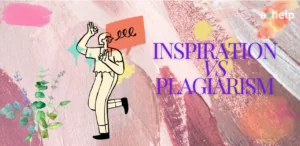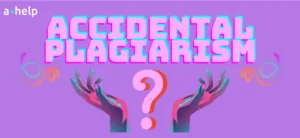The main point of plagiarism lies in the misappropriation of someone else’s work, ideas, or expressions and presenting them as one’s own. When such situations occur, it doesn’t only undermine the writer’s credibility, but also is considered disrespectful to the original author, as well as all of the time and resources out into their text. Plagiarism manifests in various forms, with the main ones being: complete, paraphrasing, patchwork, self-plagiarism, source-based, and accidental plagiarisms. Recognizing these variations is the first step toward a culture of integrity and originality in any creative or academic environment.

✅ AI Essay Writer ✅ AI Detector ✅ Plagchecker ✅ Paraphraser
✅ Summarizer ✅ Citation Generator
7 Common Types of Plagiarism
Before learning more about the specifics, let’s take a quick look at the broad spectrum of plagiarism. From the wholesale theft of a document to the subtle and unintended borrowing of ideas, plagiarism can take many forms. Here, we outline seven common types, each followed by a brief description, and an example, so you can remember the differences easily. Before we dive into the details, keep in mind that using a free plagiarism check online can help you identify and avoid these various forms of plagiarism in your own work.
Complete Plagiarism
Complete plagiarism is the academic equivalent of identity theft. It occurs when an individual submits another’s work as their own, without any alteration. This could range from purchasing an essay online to submitting a paper written by someone else under one’s own name.
Example: Turning in a thesis written by another student or a professional as if it were your own.
Complete plagiarism is a flagrant disregard for academic integrity and intellectual labor.
Direct Plagiarism
Direct plagiarism involves copying text verbatim from a source without attribution and passing it off as one’s own. It’s a clear-cut case of intellectual theft.
Example: Copy-pasting paragraphs from an online article into your essay without quotation marks or citation.
Direct plagiarism undermines the fundamental principles of scholarship and respect for authorship.
Paraphrasing Plagiarism
This type of plagiarism occurs when a writer takes ideas or information from a source and rephrases them without proper acknowledgment. It’s a deceptive form of theft that masks the original source under the guise of original writing.
Example: Reading a scientific paper and then summarizing its findings in your work without citing the source.
Paraphrasing plagiarism is theft of intellectual property, regardless of how the text is altered.
Self-Plagiarism
Self-plagiarism happens when authors reuse their previously published work without citation. This includes republishing the same content in different venues or recycling portions of past works in new projects without proper acknowledgment.
Example: Submitting a paper for a class that includes large portions of a paper you wrote for a different course.
Self-plagiarism conflates originality and recycles content, undermining the integrity of one’s work.
Patchwork Plagiarism
Also known as mosaic plagiarism, patchwork plagiarism meaning involves stitching together pieces of different sources to create a new document. It can be difficult to detect because it combines original writing with plagiarized content.
Example: Integrating sentences and phrases from multiple sources into a single paper without proper attribution.
Patchwork plagiarism is a deceptive blend of theft and originality, eroding academic and creative integrity.
Source-Based Plagiarism
This subtle form involves misrepresenting the source of information. It might include citing a non-existent source or incorrectly attributing an idea or quotation.
Example: Citing a primary source you haven’t read, based on its mention in a secondary source, without acknowledgment.
Source-based plagiarism misleads readers and distorts the academic record.
Accidental Plagiarism
Accidental plagiarism occurs due to negligence or misunderstanding of citation and paraphrasing rules. It’s not intentional but still has serious consequences.
Example: Forgetting to cite a source or improperly paraphrasing without giving credit.
Accidental plagiarism highlights the importance of diligence and understanding in academic writing.
Stressed over plagiarism? Check out our Free Plag Checker
Consequences of Plagiarism
The results of plagiarism extend far beyond academic probation or a failed assignment. They can severely impact one’s academic journey and professional career. Here’s a list of potential consequences, each paired with a relevant emoji to underscore the gravity of the situation:
- 🚫 Academic Probation: A formal warning that further misconduct could result in more severe penalties.
- ❌ Failure of the Assignment: Receiving zero credit for work found to be plagiarized.
- 📉 Failure of the Course: Compromising one’s academic standing and progress.
- ⏸ Suspension: Temporary removal from the academic institution.
- 🚪 Dismissal: Permanent expulsion from the program or institution.
- 💔 Reputational Damage: Long-term impact on academic and professional reputation.
Wrap Up
With the insights provided in this guide, writing your paper, whether it is an essay or a course work, becomes less stressful. Knowing the various forms of plagiarism and being able to tell them apart is the first step towards better writing and nearly non-existent chances of plagiarizing accidentally.
FAQ
Follow us on Reddit for more insights and updates.





Comments (0)
Welcome to A*Help comments!
We’re all about debate and discussion at A*Help.
We value the diverse opinions of users, so you may find points of view that you don’t agree with. And that’s cool. However, there are certain things we’re not OK with: attempts to manipulate our data in any way, for example, or the posting of discriminative, offensive, hateful, or disparaging material.